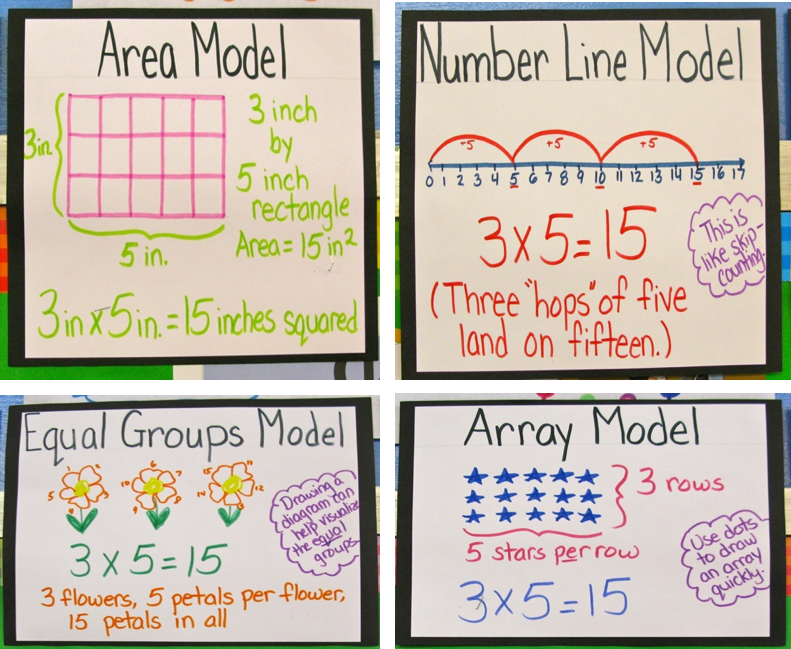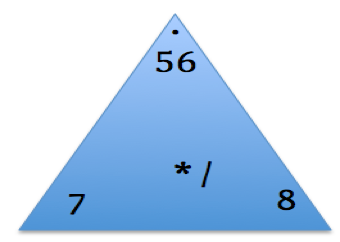How to Help Your Child Memorize Multiplication
Home /
How to Help Your Child Memorize Multiplication
Given that many children struggle with multiplication, I thought it would be a good idea to find ways to help children memorize multiplication facts. With schools teaching Common Core Standards, children are required to fluently multiply and divide within 100, by the third grade. Here are a few strategies that can help your children better understand and memorize the multiplication facts.
- Understanding equal groups—The important precursor. First off it is believed that students need to internalize what multiplication means long before they begin to memorize the multiplication facts. Children must have an understanding of the relationship between multiplication and division, including equal groups, equal shares, and the connection with repeated addition and skip counting.

- Tricks for figuring out multiplication. By stage two, children have internalized what multiplication and division are all about. It is now time to teach them tricks to quickly figure out multiplication/division facts, and help them develop their own tricks. But in all reality, there are no tricks, but simply ways to analyze multiplication patterns, apply partial product principals, and use landmark numbers to quickly apply what they already know and figure out unknown facts.

Begin by having the children fill out blank multiplication tables. Do this exercise several times a week. The first few times, have the children highlight the easy rows and columns, such as 1s, 2s, 5s and 10s. These become the landmark numbers and children then figure out the remaining factors. Here is an example of what I mean: If a student knows that 2X6 = 12 then it is taught that adding 6 more will give them 18 as 3X6. There are also several tricks that can be adopted through Greg Tang’s book, The Best of Times. For example
Four is very fast to do
When you multiply by 2.
Here’s a little good advice:
Please just always double twice!
3. Finally, we reach memorization! Some teachers using this method believe that memorization begins after students are already solving multiplication word problems and are using a wide range of strategies to figure out the necessary multiplication facts.
- Tip 1: Unsquare flashcards—Rather than using traditional flashcards that teach multiplication or division facts separately, use fact triangles. These three-sided cards have an entire fact family on the three corners of the triangle. Students enjoy “playing” with their fact triangles by covering up one corner and then having a friend figure out the hidden number.

- Tip 2: Short drill sessions are usually best. Depending on the child’s attention span, you might want to drill for five to ten minutes at a time.
- Tip 3: Music (songs) can be very effective in helping children to learn their multiplication tables. It works with the brain in manners that we are not yet fully aware of, but it is certain that music enhances learning and brain function. Using music and movement can be especially helpful for students who have math anxiety because it doesn’t seem like “math” to them. By circumventing their ‘mental block’, they can learn the tables without difficulties; the child now sees it as fun, and the ‘math triggers’ that the mind uses to block the brain and produce the fear response are never stimulated.
- Tip 4: There are also many online math games and software programs that one can use to assist children memorize their math facts.
- Math Magician Games- has a simple 1-minute countdown, and if you answer 20 questions in that time, there is an award.
- Sheppard Software– is filled with several types of games just for math facts practice, including timed practice.
- Tip 5: Use positive motivation and incentives. Giving children positive incentives to do better will more than likely produce a good outcome. Praising children for their hard work and efforts will motivate them to keep trying.
Many children struggle with learning their multiplication tables; as teachers, parents and guardians, we it is our duty to help them. After all, children will need quick multiplication skills to help them throughout high school, college, and life. It takes time, strategy, and patience to help our children work with and enjoy the challenge of conquering these multiplication skills, but I guarantee that it will be worth it.


